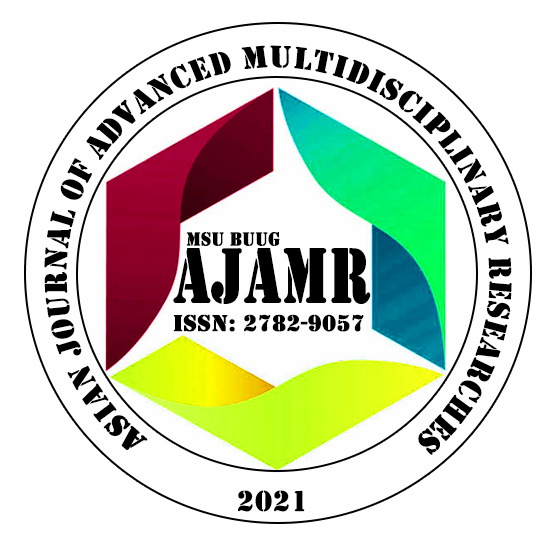

Authors: 1Deo Jamael M. Sumalinog, 2Ronald S. Salid, 3Exel Rose D. Sarino, and 4Ivy F. Amante
Authors: 1Rhea Jean A. Batbatan, 2Khristian Kyle L. Dignom, 1Fe P. Baguio, and 2Abdani D. Bandera
1Department of Animal Science, College of Agriculture, Mindanao State University Buug, Philippines
2Department of Plant Science, College of Agriculture, Mindanao State University Buug, Philippines
Email: abdani.bandera@msubuug.edu.ph
ABSTRACT
This study was conducted to achieve the following objectives: to determine the growth performance of broiler chickens fed with commercial
ration mixed with different levels of garlic powder (GP); to find out if there is a significant difference among the growth performance of
broiler chickens fed with commercial ration mixed with different levels of garlic powder; and, to identify which of the different levels of garlic powder will give the highest growth performance of broiler chickens. The experiment was laid-out using Complete Randomized Design
(CRD) with four (4) treatments and four (4) replications. There were eight (8) cages used, each cage measured 2ft. x 8 ft. The cage had two
compartments. Each compartment was placed with five (5) heads of broiler chickens. A total of eighty (80) heads of straight-run broiler cobb
chicks were used in the study. The four treatments were the following (for birds aging from 11-28days): T1 (control) 100% B-meg integra
2000; T2, 20g of GP+ 980g B-meg integra 2000; T3, 25g of GP+ 975g B-meg integra 2000; and, T4 30g of GP + 970 B-meg integra
2000.The statistical analysis showed that the average final weight, average weight gain, average daily weight gain of broiler chickens in
grams per replication per treatment and average feed conversion ratio of broiler chickens had no significant difference among the growth
performance of broiler chickens fed with commercial ration mixed with different levels of garlic powder. Based on the results of the study,
the following conclusion is drawn: There is no significant difference on the average final weight of broiler chickens in grams per replication
per treatment, average weight gain of broiler chickens in grams per replication per treatment, average daily weight gain in grams per replication per treatment and average feed conversion ratio per replication per treatment. Based on the foregoing findings and conclusions the researchers advance the following recommendations: The adoption of any of the four treatments: T1, T2, T3, and T4 to obtain higher average final
weight, to obtain higher average weight gain, to obtain higher average daily weight gain, to obtain lower feed conversion ratio and the adoption of any of the three treatments; T2, T3 and T4 to attain a low cost of production and a follow up study to verify the result of the study.
Keywords: Broiler Chickens; Garlic Powder (GP); Growth Performance; Gallus gallus domesticus